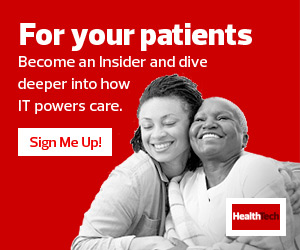HEALTHTECH: Why should hospital administrators embrace the agile approaches that IT companies regularly use when it comes to human capital?
VERDINO: It really gets down to two distinct areas: the speed at which you deliver and the expectations you place on the people who are doing the delivery. Anything we do in IT has to be laser-focused on leading with smaller teams in iterative results. In an agile IT environment, our delivery cycle is daily. The user isn’t always cooperating with agility, and that’s an opportunity.
Agility portends that the people involved are culturally aligned. They’re embracing change. They can move at a quicker pace. They’re good with self-organizing teams. They’re good with prototyping, piloting and learning as they deliver. They’re good with eliminating procedures or policies that have lost their way or become irrelevant over time. They embrace automation, and there’s what I call a constructive dissatisfaction among the team, knowing, “Hey, we can do better.” The old way might not be the right way. And let’s always look for better ways of improving things.
I view the impact of agile development methodologies, not only in its application to IT, but more as a business philosophy that we like to bring to some of our healthcare customers that are, perhaps, not moving at the pace that they need to in order to keep up with the demands of their industry.
HEALTHTECH: How can healthcare institutions embrace technology to bring innovation and cost reduction?
VERDINO: There is clearly some low-hanging fruit around applying technology within healthcare and the harnessing of data to get a better line of sight on root causes. But in healthcare, my opinion is the technology is only 25 percent of it. The other 75 percent is really having the right people who can use the data, once you have a good command of it, to inform decisions that lead to actionable improvement. To me, it’s not selling the virtues of what the power drill does. It’s more about teaching our customers how to put holes in the wall in an easier way. The bigger opportunity for me, though, isn’t necessarily on the cost savings side. It’s on the cost recovery side.
The research that we follow indicates that the denial rate on reimbursement continues to balloon on average across the top 1,500 health systems. It’s gotten worse, not better, over the past five years. It’s certainly been impacted by the public health emergency.












